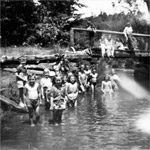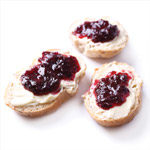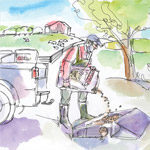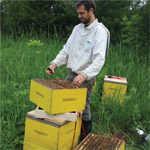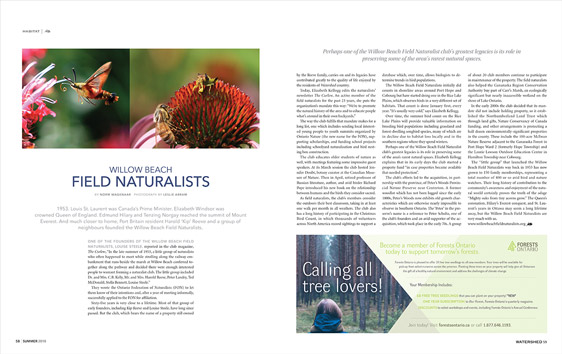

1953. Louis St. Laurent was Canada’s Prime Minister. Elizabeth Windsor was crowned Queen of England. Edmund Hilary and Tenzing Norgay reached the summit of Mount Everest. And much closer to home, Port Britain resident Harold ‘Kip’ Reeve and a group of neighbours founded the Willow Beach Field Naturalists.
ONE OF THE FOUNDERS OF THE WILLOW BEACH FIELD NATURALISTS, LOUISE STEELE, reported in the club magazine, The Curlew, “In the late summer of 1953, a little group of naturalists who often happened to meet while strolling along the railway embankment that runs beside the marsh at Willow Beach conferred together along the pathway and decided there were enough interested people to warrant forming a naturalist club. The little group included Dr. and Mrs. C.B. Kelly, Mr. and Mrs. Harold Reeve, Peter Landry, Ted McDonald, Stella Bennett, Louise Steele.”
They wrote the Ontario Federation of Naturalists (FON) to let them know of their intentions and, after a year of meeting informally, successfully applied to the FON for affiliation.
Sixty-five years is very close to a lifetime. Most of that group of early founders, including Kip Reeve and Louise Steele, have long since passed. But the club, which bears the name of a property still owned by the Reeve family, carries on and its legacies have contributed greatly to the quality of life enjoyed by the residents of Watershed country.
Today, Elizabeth Kellogg edits the naturalists’ newsletter The Curlew. An active member of the field naturalists for the past 23 years, she puts the organization’s mandate this way: “We’re to promote the natural history of the area and to educate people what’s around in their own backyards.”
The way the club fulfills that mandate makes for a long list, one which includes sending local interested young people to youth summits organized by Ontario Nature (the new name for the FON), supporting scholarships, and funding school projects including schoolyard naturalization and bird nesting box construction.
The club educates older students of nature as well, with meetings featuring some impressive guest speakers. At its March session the club hosted Jennifer Doubt, botany curator at the Canadian Museum of Nature. Then in April, retired professor of Russian literature, author, and avid birder Richard Pope introduced his new book on the relationship between humans and the birds they consider sacred. As field naturalists, the club’s members consider the outdoors their best classroom, taking in at least one walk per month in all weathers. The club also has a long history of participating in the Christmas Bird Count, in which thousands of volunteers across North America record sightings to support a database which, over time, allows biologists to determine trends in bird populations.
The Willow Beach Field Naturalists initially did counts in shoreline areas around Port Hope and Cobourg but have started doing one in the Rice Lake Plains, which observes birds in a very different set of habitats. That count is done January first, every year. “It’s usually very cold,” says Elizabeth Kellogg.
Over time, the summer bird count on the Rice Lake Plains will provide valuable information on breeding bird populations including grassland and forest-dwelling songbird species, many of which are in decline due to habitat loss locally and in the southern regions where they spend winters.
Perhaps one of the Willow Beach Field Naturalist club’s greatest legacies is its role in preserving some of the area’s rarest natural spaces. Elizabeth Kellogg explains that in its early days the club started a property fund “in case properties became available that needed protection”.
The club’s efforts led to the acquisition, in partnership with the province, of Peter’s Woods Provincial Nature Preserve near Centreton. A former woodlot which has not been logged since the early 1800s, Peter’s Woods now exhibits old growth characteristics which are otherwise nearly impossible to observe in Southern Ontario. The ‘Peter’ in the preserve’s name is a reference to Peter Schultz, one of the club’s founders and an avid supporter of the acquisition, which took place in the early 70s. A group of about 20 club members continue to participate in maintenance of the property. The field naturalists also helped the Ganaraska Region Conservation Authority buy part of Carr’s Marsh, an ecologically significant but nearly inaccessible wetland on the shore of Lake Ontario.
In the early 2000s the club decided that its mandate did not include holding property, so it established the Northumberland Land Trust which through land gifts, Nature Conservancy of Canada funding, and other arrangements is protecting a half dozen environmentally-significant properties in the county. These include the 100-acre McEwan Nature Reserve adjacent to the Ganaraska Forest in Port Hope Ward 2 (formerly Hope Township) and the Laurie Lawson Outdoor Education Centre in Hamilton Township near Cobourg.
The “little group” that launched the Willow Beach Field Naturalists way back in 1953 has now grown to 150 family memberships, representing a total number of 400 or so avid bird and nature watchers. Their long history of contribution to the community’s awareness and enjoyment of the natural world certainly proves the truth of the adage “Mighty oaks from tiny acorns grow.” The Queen’s coronation, Hilary’s Everest conquest, and St. Laurent’s years in Ottawa may seem a long lifetime away, but the Willow Beach Field Naturalists are very much with us.
Story by:
Norm Wagenaar

